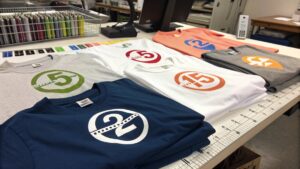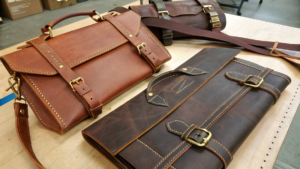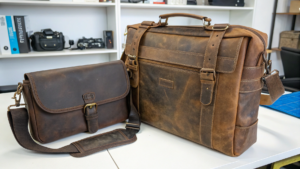Which Water Bottle Will You Actually Use Every Day?
Looking for the best water bottle? Does endless choices confuse you? Find out how to pick one you will truly love and use daily.
The best water bottle is the one you will use consistently. It should fit your lifestyle and daily routine, considering factors like size, weight, and ease of use. Features matter less than how well the bottle integrates into your habits.

When people ask me about water bottles, they often say, "Which one is the best?" But I tell them to ask a different question: "Which one will I actually use every single day?" This is the biggest mistake people make. They think too much about features. They think too little about how they will actually use the bottle. A bottle might keep your drink cold for two days. But if it is too big for your bag or too heavy for a long walk, it will just sit on a shelf. I have seen many good bottles just collect dust this way.
How much water should you drink a day?
Are you unsure how much water you need daily? Do you feel tired or thirsty often? Knowing your daily water goal helps you stay healthy.
Most adults should aim to drink about eight 8-ounce glasses of water a day, which is about 2 liters or half a gallon. This is a general guide. Your exact need depends on your activity level, climate, health, and diet. Listen to your body and drink often.

Staying hydrated is very important for your health. I have always made sure to keep a water bottle with me. It reminds me to drink. The common advice is to drink eight glasses of water. That is about 2 liters. But this is just a starting point. If you are very active, like if you exercise a lot, you will need more water. If you live in a hot climate, you will also need more. Here in Taiwan, it can be very hot, so I drink more. Even if you eat many fruits and vegetables, you get some water from food. But plain water is still best.
Your body tells you when you need water.
- Thirst: This is the most basic sign. Drink when you feel thirsty.
- Urine Color: If your urine is dark yellow, you need more water. It should be light yellow or clear.
- Energy Levels: Sometimes, feeling tired or having a headache means you are not drinking enough.
A great water bottle acts as a gentle reminder to drink. It is a behavioral nudge. If your bottle is easy to carry, and easy to open with one hand, you are more likely to use it often. I have learned that the way a bottle feels in your hand matters a lot. If it feels good, you will pick it up more often. This makes you drink more. If it is hard to open or big to hold, you might just leave it.
So, when you pick a bottle, think about how it helps you drink more. Is the lid easy to use? Can you drink while walking or driving? Does it fit your cup holder? These small things make a big difference in how much water you actually drink. It is not just about the bottle's features. It is about how the bottle fits into your daily routine. That is what helps you reach your water goal.
| Factor Affecting Water Intake | Impact on Daily Needs | Example Scenarios |
|---|---|---|
| Activity Level | More activity = more water | Exercise, manual labor |
| Climate | Hotter climate = more water | Humid Taiwan, desert environments |
| Health Status | Sickness (fever) = more water | Vomiting, diarrhea |
| Diet | High sodium = more water | Lots of salty snacks |
| Specific Needs | Pregnancy, breastfeeding | Increased fluid requirements |
The best way to know if you are drinking enough is to listen to your body and make sure your water bottle is a helpful tool, not a hindrance.
Which steel is best for a water bottle?
Are you worried about bottle materials? Do you want a safe and durable steel bottle? Choosing the right steel matters for health and longevity.
The best steel for a water bottle is food-grade stainless steel1, specifically 18/8 (Type 304) or 18/10 (Type 316). These types are very durable, resist rust, do not hold flavors, and are safe for drinks. They do not leach chemicals into your water.

When it comes to steel water bottles, safety and durability are key. I always recommend food-grade stainless steel. This means the steel is safe for food and drinks. The most common types are 18/8 and 18/10. The numbers tell you about the chromium and nickel content. For example, 18/8 means 18% chromium and 8% nickel. Chromium helps prevent rust. Nickel adds shine and durability. These types are very good.
Why these types of steel are best:
- Rust Resistance: They do not rust easily. This means your bottle stays clean and safe over time.
- No Flavor Transfer: They do not pick up flavors from drinks, like coffee or juice. So your water always tastes fresh.
- Durability: They are strong and can handle daily bumps and drops. This means the bottle lasts a long time.
- Safety: They do not put chemicals into your water. This is very important for health.
Some cheaper steel bottles might not be true food-grade stainless steel. They might rust faster or affect the taste of your water. Always look for labels like "18/8 stainless steel2" or "food-grade 304 stainless steel." When I help companies choose water bottles for promotions, I always make sure the steel is of this quality. It protects the brand image to give a safe, lasting product.
Think about the context of using a water bottle. If you are hiking, you need a bottle that can take a beating. If you are commuting, you need one that is leak-proof and fits in your cup holder. Stainless steel is strong enough for almost any context. The quality of the steel ensures the bottle stays a good tool for you, not just for a few weeks, but for months and years. This longevity means your brand stays visible for a very long time. This is a very good return on your investment, far better than short-term ads.
| Steel Type | Composition | Key Properties | Why It's Good for Bottles |
|---|---|---|---|
| 18/8 (Type 304) | 18% Chromium, 8% Nickel | Rust-resistant, durable, non-leaching | Standard for food-grade, widely used |
| 18/10 (Type 316) | 18% Chromium, 10% Nickel | More corrosion resistant, very durable | Often used in medical/marine, higher-end |
| Other Stainless Steel | Varies | Can be less durable, might rust | Avoid if not specified as food-grade 18/8 |
Choosing 18/8 or 18/10 stainless steel ensures you get a safe, durable, and reliable water bottle that serves you well every day.
How to check water bottle quality?
Are you worried about buying a low-quality water bottle? Do you want to be sure it will last? Knowing how to check quality helps you choose wisely.
To check water bottle quality, look for food-grade stainless steel (18/8 or 18/10) for metal bottles. Check the lid for a secure, leak-proof seal. Feel the material for durability and a pleasant touch. Examine the finish for smooth edges and no defects. Read reviews and trust known brands.

Checking the quality of a water bottle is important. It is not just about the material. It is about how well it is put together. When I look at bottles in my business, I check many things. First, for stainless steel bottles, I look for the 18/8 or 18/10 stamp. This tells me about the steel quality.
Next, I look at the lid. The lid is very important. It should close tightly. It should not leak. Some lids have a silicone seal. This helps stop leaks. Can you open it with one hand? This makes it easier to use while walking or driving. I also check how it feels to drink from. Does it have a good mouthfeel? This might sound small, but it affects how much you like using the bottle.
Then, I check the overall build.
- Weight: Is it too heavy to carry comfortably for a long time? A triple-insulated bottle might keep drinks cold, but if it is too bulky, you will not use it.
- Ergonomics: Does it feel good to hold? Is it easy to grip?
- Finish: Is the surface smooth? Are there any sharp edges? Does the coating look even?
- Insulation (if applicable): If it claims to keep drinks hot or cold, check reviews or common experiences.
- Cleaning: Is it easy to clean? Can you get a brush inside? This is important for hygiene.
Think about the context where you will use the bottle. If you commute, it needs to be leak-proof and fit in your cup holder. If it is for home or office, maybe the looks and how it feels to drink from are more important. If you hike, then weight and how rugged it is matter most. There is no one "best" bottle for everyone. The best bottle is the one that fits your life perfectly. It is the one that disappears into your routine. This is because that is the bottle you will truly use every single day. This daily use is what truly serves you and keeps you hydrated. It is also what gives your brand constant, silent exposure if it is a promotional gift.
| Quality Check Point | What to Look For | Why It Matters |
|---|---|---|
| Material (Steel) | 18/8 or 18/10 food-grade stainless steel | Safety, rust resistance, durability |
| Lid | Secure, leak-proof, easy to open | Prevents spills, allows one-handed use |
| Ergonomics | Comfortable to hold, good grip | Encourages frequent use |
| Finish | Smooth, no sharp edges, even coating | Safe to handle, looks good, durable coating |
| Ease of Cleaning | Wide mouth, simple parts | Ensures hygiene, promotes consistent use |
| Weight/Bulk | Fits purpose (e.g., commute vs. hike) | Influences likelihood of daily carrying |
Checking these quality points helps you choose a water bottle that is not just functional but also a joy to use.
Conclusion
The best water bottle is the one you actually use daily. Focus on its fit for your routine, checking for quality materials and user-friendly features like easy-to-use lids for consistent hydration.





